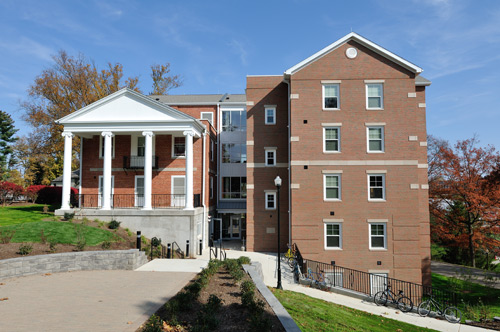Life Cycle Assessment of Building Products
Learning Objectives:
- Identify and differentiate emerging practices involved in quantifying the environmental impacts of building materials and products.
- Understand the Life Cycle Assessment (LCA) and Environmental Product Declaration (EPD) processes and their relevance to green building design.
- Explore the use of LCAs and EPDs as part of the emerging LEED version 4 requirements for materials and resources and other green certifications.
- Observe and evaluate specific case studies using product transparency and benchmarking.
Credits:
Those involved in green building design and construction have recognized for some time that the materials and products used in buildings make a significant environmental impact long before they are ever installed. These impacts can include intensive amounts of embodied energy used to extract raw materials and then manufacture the product. They can also include the associated fossil fuel depletion and carbon footprint of the process, which may contribute to smog, ozone destruction and global climate change. The disposal of products at the end of their service life likewise contributes to environmental impacts through the use of energy to remove and relocate them plus the impact of disposal in landfills, incineration, or other methods. Because of these recognized impacts over the full life of products and materials, there has been increasing interest in finding a reliable method for quantifying, comparing, and documenting the comprehensive environmental impacts related to specific building products, including increased interest and focus on the use of a standardized Life Cycle Assessment (LCA) process within individual product categories. In the interest of encouraging truly greener buildings, the proposed LEED version 4 (anticipated mid-year 2013) and other green certification programs are using LCA as a more comprehensive tool to gauge and compare the environmental footprint of building materials and products.
The Emerging Life Cycle Assessment Process
A life cycle assessment (LCA) is an analysis of every component or phase of a product's manufacture and use. The life cycle begins with the so-called “cradle” of the product - the extraction of raw material and transportation to the manufacturing site, which taken together is referred to as the extraction phase. Next the manufacturing phase takes over where labor, equipment, and energy are used to create the building material or product. Once ready, it is deemed to be at the “gate” and ready for shipping. The finished products move into the construction phase by being transported to the jobsite and incorporated into the building construction. After installation and the building is placed into service, the products or materials live out their use phase, presumably doing successfully all of the things intended and holding up as expected over time. Finally, at the end of the useful service life of either the building or the product, then the end-of-life (so-called “grave”) phase emerges where decisions about disposing, recycling, or re-using are made.
 |
Photo courtesy of CalStar Products, Inc. |










